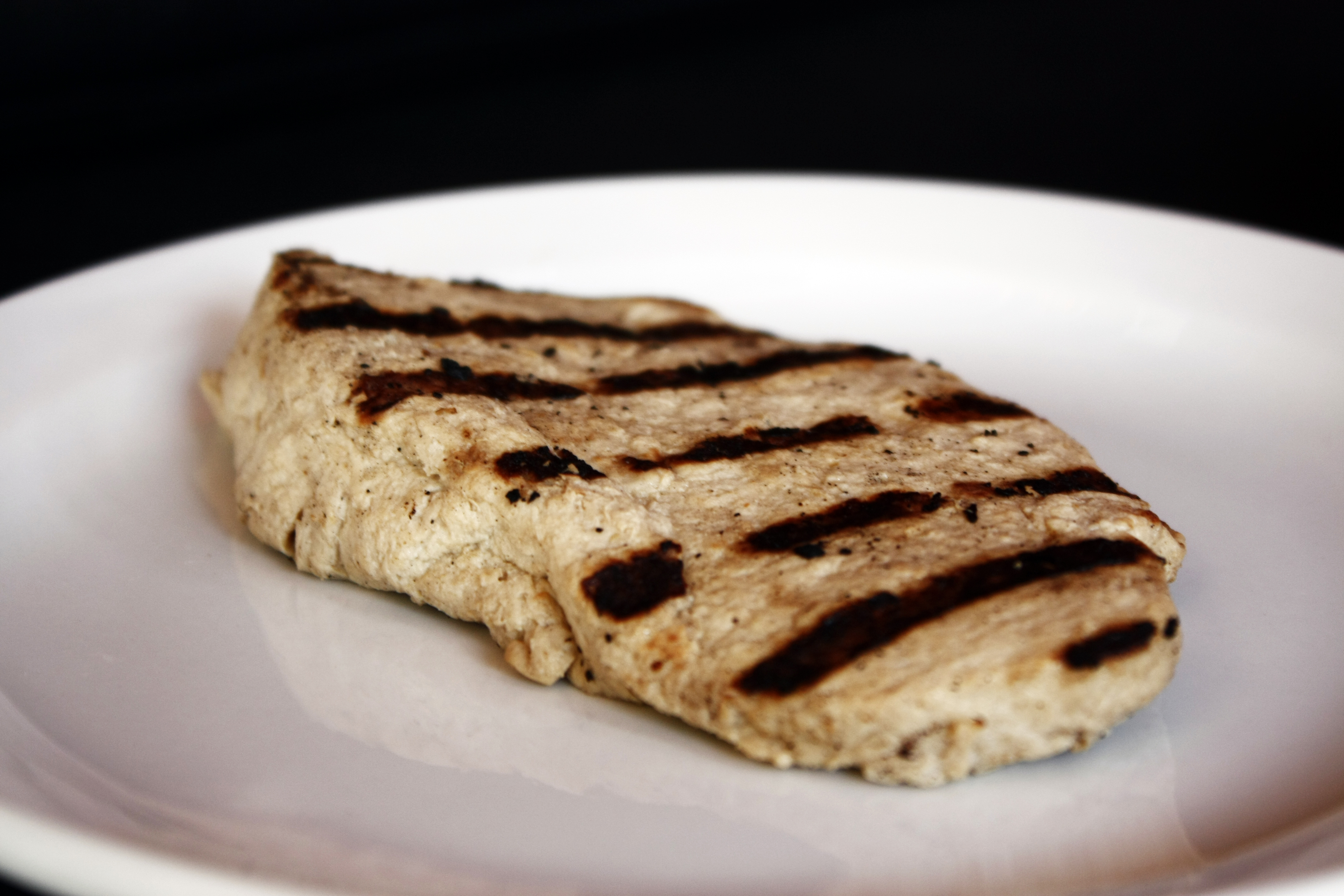
Chef Tanya’s tempeh (TEM-pay) is made of cultured soybean and millet, a recipe that originated in Indonesia. Rich in protein, iron and antioxidants, the Tempeh is often grilled, giving the patty a crunchy texture.
It looks like chicken, tastes like chicken … and isn’t chicken. But don’t call it fake meat.
The Native Foods Café on Gayley Avenue is the only vegan restaurant in Westwood Village.
Its menu offers meatball pizzas, bacon cheeseburgers and other common entrees that seem out of place for an animal protein-free kitchen.
Native Foods Café substitutes red meats and poultry with seitan, tempeh and “native chicken,” and these “native meats” are a hit, keeping restaurant staff busiest during lunch hours. Vegan or not, customers order the plant-based proteins to fill their hungry bellies.
Chef Tanya Petrovna founded the establishment that fuels this Westwood addiction.
She brainstormed the edibles on the menu and fine-tuned the processes for her native meats, which are made from scratch on a daily basis.
“I don’t like to call it fake meat. Meat, in Webster’s dictionary, actually means non-liquid. We say nut-meats, for example, because it pertains to texture. Meat has come to mean animal flesh, but I would hope to one day redefine that,” Petrovna said.
Seitan, tempeh and “native chicken” may seem foreign, but Petrovna insists on these staples because of their health benefits, good texture and flavor.
“Everyone has this stigma about being vegetarian, like, “˜Ew, something vegetarian has to be sprouts or rabbit food, there’s no flavor.’ And they’re often right. When I would go out, that’s what I would get … a baked potato and a salad. That was the whole meal,” Petrovna said.
Petrovna’s seitan comes in sliced, ground or sausage form. In the kitchen, seitan batches can be seasoned with spices to suit menu items: The Greek Gyro Earth Bowl includes peppered seitan, whereas the Classic Deli Reuben features a realistically pink-colored variety.
The process for making seitan originates 2,000 years ago from the Near East, according to Petrovna. She advertises her modern variation as “wheat meat.”
Prepared by first beating flour and water to form a dough, the seitan is then kneaded firmly to bind the wheat proteins together.
After rinsing the mixture, Petrovna is left with half of what she started with. The water washes the wheat starches away, leaving only the nutritious proteins for consumption.
“The time it took, and the effort ““ seitan was seen as a delicacy,” Petrovna said.
Petrovna’s tempeh is also of Eastern origin. First created in Indonesia, the soy product provides protein, iron and antioxidants to the body.
While the seitan can be used right away, tempeh requires 24 hours before it can be sold. Much like sourdough bread, tempeh requires a starter.
The culture is mixed in with cooked soybeans and millet, and is then allowed to ferment until it forms a loaf.
The next day, kitchen staff can slice, grill or even batter and fry the tempeh to accompany the other organic ingredients in the recipe.
Daniel Cuellar, general manager of the Westwood branch, said the finished tempeh takes merely three minutes to cook.
Perhaps most intriguing is the “native chicken.” This menu option closely resembles the flavors of its feathered equivalent, and this occurs on a molecular level.
Animal flavors are essentially specific combinations of amino acids. Petrovna can emulate certain molecular structures to create the same tastes. For Cuellar, ignorance is bliss.
“It’s just one of those mysteries that I don’t want solved. It tastes just as delicious, and it’s mind-boggling. I have no idea,” Cuellar said.
Petrovna opened her first Native Foods Café in 1994 and now owns seven locations around Southern California. Introducing these alternative meats has only brought her success.
“My intent was not just to have one,” Petrovna said.
“To really change the world it would have to be like McDonald’s, places that are on every street corner that everyone was so comfortable with, not just so because of the convenience but because it also tastes good.”
